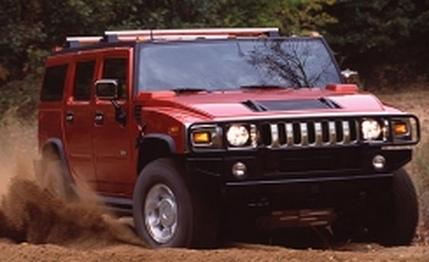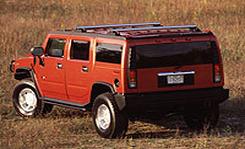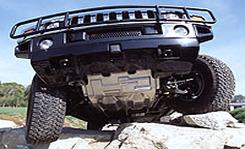
 Road Test
Road Test
It doesn't rain much in Baja California, but when a good storm blows through, bad things can happen. You can get flash floods that make that business with Moses and the Pharaoh's goons at the Red Sea look like nothing more than a problem with excessive humidity.


There is evidence of such hydraulic mischief as we work our way south from the tiny village of El Horno in southern Baja. Our route has been horribly mutilated; there are gouges two feet deep beneath us, and rocks and boulders are strewn in an aggravating, random fashion.
We are on the western side of the Sierra de la Giganta, and we are following the route of the first Baja 1000, run in 1967 from Tijuana to La Paz.
Appropriately, our group is being led by Rod Hall, the off-road racer from Reno who competed in that first event and who still races Hummers off-pavement. Hall is the only competitor to have raced in every Baja 1000, which indicates world-class status for being in a rut, to say nothing of washes, rock fields, and dry lake beds.
We have four Hummers. Two are originals, made famous in Desert Storm and now sold to civilians as the H1. The Hummer got so much recognition in the 1990s that GM executives were frenzied with envy and in 1999 teamed up in a marketing agreement with AM General to create a new GM brand, Hummer, with new models such as this H2 wagon and a simpler, cheaper H3 expected in 2005. The H2 is built in a new AM General-owned plant in Mishawaka, Indiana, and all Hummers, including the H1, will eventually be sold through GM-franchised Hummer dealerships.
We're here to try out the 2003 H2, which goes on sale this summer for a base price of $48,800, less than half what an H1 wagon costs. Using loads of unseen parts and components from GM's full-size-SUV lineup -- beefed up and modified to make them worthy of the Hummer name -- makes this possible. There's no mistaking the H2's boxy visage as anything but a Hummer, and it's actually a bit longer and taller than the H1, but it weighs 750 pounds less and is 5.3 inches narrower, making it friendlier at the drive-in. Two questions remain, though: How do the two Hummers compare, and is the H2 "Hummerful" enough?


Ruined as it is, the "road" we're on is nothing more than a minor inconvenience for the original Hummer. With its 16.0 inches of ground clearance and fully independent suspension, the H1 requires less attention to tactics than the new H2. Instead of fretting about the terrain, usually one simply glances, aims, and drives. Wherever.
The H2, with about six fewer inches of ground clearance, requires a bit more reflection when the going gets really rough. Concerns about raising the center of gravity kept GM engineers from adding more ground clearance. That means that even though an H1 could straddle a large rock with impunity, the wise H2 driver may wish to place a tire on the rock and drive over it instead.
The H1 also has less front overhang and will approach a far steeper bank than the H2 (47.0 degrees with a winch on an H1 versus 43.6 degrees for a winchless H2). Meanwhile, the 19.8-degree approach angle of the H2's cousin, the Tahoe, means the Chevy driver had better back up and find another way around. It can't come close to the H2, much less the H1. Coming back down those humps into the Arroyo San Javier, the winding, occasional river that divides -- and in a heavy rain probably conquers -- our dirt-road trail, the H2 is no more likely to suffer butt burn than the H1.
Day after day we work through Baja's most remote and spectacular areas. For hours we thump, slide, and scramble along, rarely seeing other vehicles or people, at most passing a few scraggly cattle. We pick our way through mountains, scoot past abandoned mines, and run along the top of a 2000-foot mesa that provides a roof-of-Baja view.
Evenings we reluctantly emerge from the splendid Baja nowhere and grab hotel rooms and cervezas -- not necessarily in that order. Sometimes we chat with locals who are honestly puzzled about why we shun perfectly good paved roads.